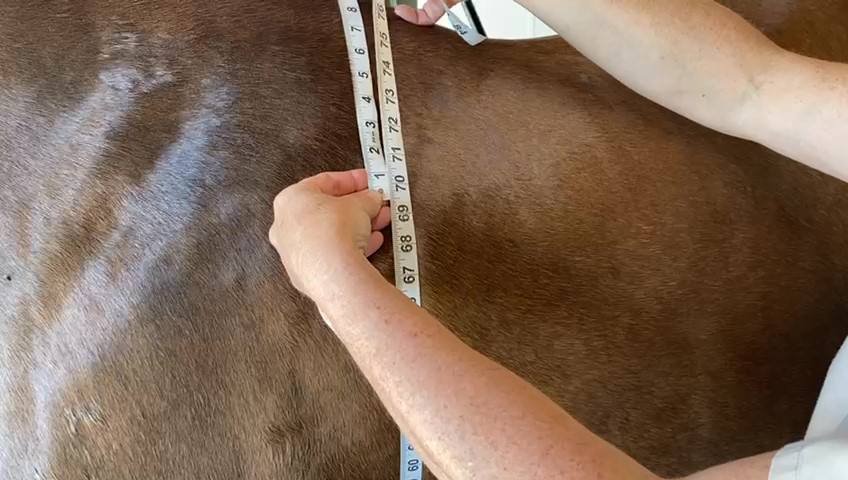
Jun 10, 2024 | Weight loss/gain

Hi everyone, Whinny here! Horses are high maintenance creatures, have you noticed? They require a careful eye to make sure they stay healthy and in good condition. One of the ways you horse owners can monitor your horse’s health is to keep track of his weight.
Knowing how much your horse weighs will help you keep an eye on weight gain and weight loss through the seasons, so you can adjust his feed accordingly. If he is overweight, you probably know that he is at risk of developing laminitis – a serious concern. If he is underweight, you’ll have to figure out why. That could mean his diet needs to be changed, his teeth need attention, his worm load is too high, or several other health reasons. Keeping track of weight changes and making small adjustments early is definitely better than waiting until there are big, obvious health problems. It’s also important to know your horse’s weight so you can give medications such as dewormer correctly. You don’t want to overdose or underdose him.
But how to weight him? Unfortunately, you can’t just ask your horse to step on the bathroom scale. The good news is that there is an easy measurement you can do at home to get a pretty darn accurate weight for your horse. You may have seen my docs and techs do this when they come out to give your horse his vaccines. You can do it just as easily yourself! It doesn’t require any special equipment, just a flexible tape measure and a calculator (unless you really like long division). A metal tape measure isn’t bendy enough, but a fabric or plastic one with inch markings works great.
Here’s what you do:
- Stand your horse on a relatively flat surface. He should be standing “square”, with his legs placed evenly, not stretching one forward or back too much.
- Measure around your horse’s heart girth: Holding the “zero” end of the tape, place the other end of the tape over his back behind his withers (about where his mane ends). Reach under his belly and pull the end of the tape under his barrel about where the girth would sit. Bring the tape up to meet the end with the “zero”. The number on the weight tape where the “zero” meets is the heart girth number.
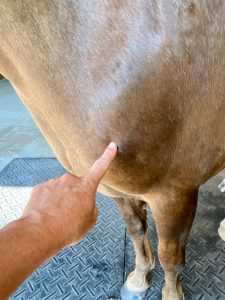
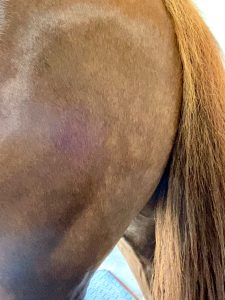 Measure his length: Place the “zero” end of the tape at the point of his shoulder. Measure the length of his body straight back along his side to the crease between his muscles just below the point of his buttock.
Measure his length: Place the “zero” end of the tape at the point of his shoulder. Measure the length of his body straight back along his side to the crease between his muscles just below the point of his buttock.- Plug your 2 measurements into this formula. Choose the right one based on whether he is an adult, a yearling, or a weanling.
Adult horse weight in pounds = heart girth x heart girth x length divided by 330. For yearlings, divide by 301. For weanlings, divide by 280.
To make it easier for you to see this in action, here is Dr. Yorke with a video on how to do the measurements!
Until next week,
~Whinny
P.S. Have you subscribed to my blog yet? Don’t rely on Facebook to let you know when I write a new one. Just scroll down to the big purple box, put your email address in it, and I’ll email you my blog every Monday, a day before it goes out on social media. No spam, no ads, just the blog! Go on, be a good human! You can do it!
 Whinny’s Wisdoms is the official blog of Whinny the Clinic Mouse at Springhill Equine Veterinary Clinic in Newberry, Florida. If you liked this blog, please subscribe below, and share it with your friends on social media! For more information, please call us at (352) 472-1620, visit our website at SpringhillEquine.com, or follow us on Facebook!
Whinny’s Wisdoms is the official blog of Whinny the Clinic Mouse at Springhill Equine Veterinary Clinic in Newberry, Florida. If you liked this blog, please subscribe below, and share it with your friends on social media! For more information, please call us at (352) 472-1620, visit our website at SpringhillEquine.com, or follow us on Facebook!
[jetpack_subscription_form title="Subscribe to Whinny's Wisdoms"]

Oct 23, 2017 | Diet, Ulcers, Weight loss/gain
I eat Purina cat food. Dr. Lacher told me she was going to the Purina research facility, so naturally I felt I should get some food out of the deal. Turns out Purina horse and Purina cat aren’t the same thing, so I didn’t get anything out of this deal. However, Dr. Lacher said she learned a ton, so read on to hear about her trip to St. Louis. Here’s what she said about it:
The first thing I’m going to say about this trip is that Purina was all about the science. While they flew us to St. Louis, put us up in an amazing hotel (check out the St. Louis Grand Central Station Hotel), and fed us very well, the information presented wasn’t about Purina. Instead, it was about the science behind fueling and caring for horses. They also talked about how they use that science to make better feeds, and how they make sure the research they do gets published so horses everywhere can benefit.
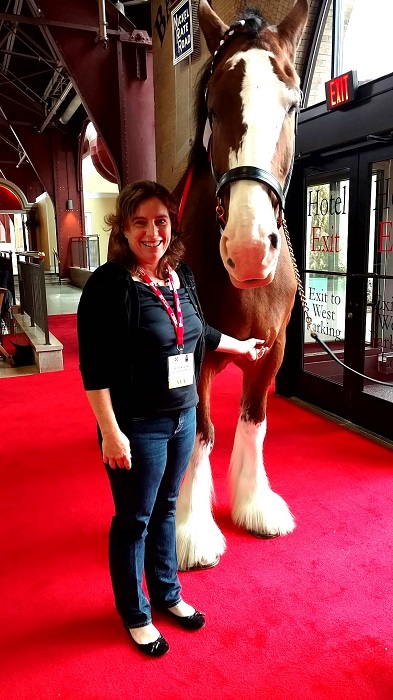 We started off the evening by meeting these guys: Rascal and McGee. I have been around the Anheuser Busch Clydesdales before but I find their size awe-inspiring every time. I also find their tolerance for the crazy stuff they are asked to do pretty impressive. Rascal and McGee spent two hours standing in a hotel lobby (on a red carpet with padding underneath) being incredibly bored while 250-300 veterinarians and technicians oohh’d and aaahh’d over them, took selfies, marveled at their feathers, their extreme level of clean, and how they did their hair, and never once lost their cool. I can’t get Vespa to calmly stand on crossties in the barn at home reliably!
We started off the evening by meeting these guys: Rascal and McGee. I have been around the Anheuser Busch Clydesdales before but I find their size awe-inspiring every time. I also find their tolerance for the crazy stuff they are asked to do pretty impressive. Rascal and McGee spent two hours standing in a hotel lobby (on a red carpet with padding underneath) being incredibly bored while 250-300 veterinarians and technicians oohh’d and aaahh’d over them, took selfies, marveled at their feathers, their extreme level of clean, and how they did their hair, and never once lost their cool. I can’t get Vespa to calmly stand on crossties in the barn at home reliably!
The next day I learned how hard it is to treat ulcers in horses. Don’t get me wrong, I know we have the chronic offenders. Those horses we treat for ulcers again and again and again. Now, thanks to an incredibly scrappy Australian, I understand why it’s so difficult to get some of these horses managed! Gastrogard is difficult to give correctly, and some horses produce lots of acid no matter how much Gastrogard you give them, and some horses get ulcers in the glandular part of the stomach and they need a whole different plan.
To get your money’s worth from Gastrogard (and it’s a lot of money):
- Keep your horse in a stall overnight
- Give no food after 10pm (although they can have a flake of hay at 10pm)
- Give Gastrogard in the morning BEFORE feeding
- Wait at least 1 ½ hours to feed
- Repeat for three weeks.
In the afternoon we all piled into buses and drove about an hour away to the Purina Research Farm. This is about 1200 acres of beautiful rolling fields dotted with cows, chickens, goats, sheep, horses, and even a research pond! Here Purina begins the process of making their feed better. They take an idea, turn it into a feed (or add it to an already available feed), and put it to the test on actual animals in real world situations! They can tell if horses are eating big bites or little bites of grain, how fast they are eating, do they eat hay and then grain, or grain and then hay, and even do they like this better than that down to 0.01 pounds. At this point I was thinking being a research horse for Purina is a pretty cushy job. Then we went to the treadmill barn.
The treadmill horses tell Purina if their feed improves performance in an actual test of performance. These studies are over a prolonged period, sometimes as long as 8-12 months. During that time the horse’s fitness is tested by a myriad of machines. They look at heart rate, return-to-resting heart rate, what they breathe out vs. what they breathe in, and if it’s a marker of how a horse’s metabolism is working, they measure it. This takes the guesswork out of knowing if a tweak to a diet makes a real difference. Science tells them yes or no. Here’s the cool thing: if the answer is no, no matter how badly they want it to be yes, Purina doesn’t make the change.
The final stop on the Purina Farm tour was what they call the Microbiome Barn. Everyone agrees the microscopic critters on and in a body (horse or human) are important in ways we never dreamed. However, no one is really sure what bacteria, fungus, and protozoa are involved, how to influence these critters, if we even can influence them, and do good or bad (or nothing) things happen when we do try to influence them. Purina has a group of horses dedicated to this research. They are in the very early phases, but it’s pretty exciting stuff!!
Sunday was another day of science!! I am often frustrated by the horse who seems to have weird GI stuff going on: diarrhea for months or years, weight loss in the senior horse, and the repeat offender colic horse. We talked about diagnosing and treating these horses. Then we talked about how different components of the diet can impact these horses. Sure, there were suggestions on which Purina diets had these ingredients, but the overriding message was about ingredients, not diets in particular. Needless to say, I learned a lot this weekend!!
There you have it. I’m glad Dr. Lacher learned a lot and enjoyed herself, but next time I want food! That’s reasonable, right?
Until next week,
Tony
Tuesdays with Tony is the official blog of Tony the Clinic Cat at Springhill Equine Veterinary Clinic in Newberry, Florida. If you liked this blog, please subscribe below, and share it with your friends on social media! For more information, please call us at (352) 472-1620, visit our website at SpringhillEquine.com, or follow us on Facebook!
[jetpack_subscription_form title="Subscribe to Whinny's Wisdoms"]
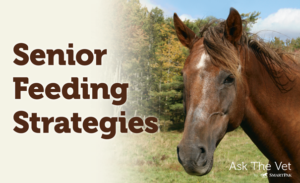
Apr 4, 2017 | Events, Feed, Hay, Retired, Seniors, Weight loss/gain
Garbage in, garbage out, or so I hear from the humans. Here I sit munching on a nice grasshopper. They have a great flavor; I recommend you try them, especially roasted with a bit of salt and pepper! Great nutritional choices like this are what keep this cat in top physical condition. Senior feeding strategies for your horse will keep them running at peak performance, too.
Ch-ch-ch-changes
You sang it, didn’t you? I know I did. Then I had images of the movie Shrek play through my head. OK, back on track. You have made wise decisions for your horse’s diet (your own, not so much) and things have been going great. However, as horses get older, their diet needs change, and those changes are very different from the ones humans experience. Doing a very thorough evaluation of body condition score, muscle quality, and diet should be done at least every six months on every horse. (Need help? My minion, Beth, has tons of nutrition experience and can help you formulate a custom plan. In fact, Wellness Plans include this!) If you notice topline shrinking, maybe the ribs are a little easier (or harder) to find, or eating is taking a long time, it may be time to adjust the diet.
Protein, Protein, Protein
You’ve been monitoring your horse’s condition, and have noticed the muscles on the topline are slowly fading away. Maybe there are fat pads cropping up by the top of the tail and behind the shoulder blades. It’s just plain harder to maintain condition. Protein is the answer. Well, part of the answer, anyway.
We have been well trained not to increase protein for older people and animals, but, as usual, horses are weird. It’s important to remember that basic diets for horses are pretty low in protein, usually around 10-12%, versus cat diets which hover around 30-32% protein. This means adding protein to equine diets is a relative thing. The easiest way to add protein is with a ration balancer. Just about every major feed company makes a ration balancer. Enrich Plus, Triple Crown 30, Equalizer, and Empower Balance are all examples of ration balancers. Adding a pound or two of one of these to every feeding is often all the older guys need.
When do I switch to Senior Feed?
Maybe never. While 15 years old is our guideline for Super Senior, it’s just that: a guideline. Dr. Lacher’s 27 year old horse is still on a “regular” feed, SafeChoice Maintenance. Full on Senior concentrates are best suited for horses with very bad teeth. These diets are designed to meet all the nutritional needs of a horse: grain, roughage, vitamins, and minerals. Most of our Seniors have pretty good teeth which means they can get loads of nutrition from hay. As long as your Super Senior is doing well on a regular diet, there’s no need to switch to senior feed.
If not Senior feed, then what?
Okay, you’re having some trouble maintaining topline, but there’s also some fat pads creeping up beside your horse’s tailhead, and you currently feed SafeChoice Maintenance and coastal hay, along with 4-5 pounds of alfalfa hay. Oh, and your horse just turned 17 years old. You ride 3-5 days every week and would put yourself in the moderately in-shape category. Now what?
There’s loads of options out there, but a little tweaking will go a long way here. First, let’s increase the quality and quantity of protein. Dropping back on the amount of SafeChoice Maintenance and adding Empower Balance will increase protein while decreasing calories overall. Trying this simple change for 30 days, while monitoring body condition, may be all the adjusting that’s needed. However, if you aren’t satisfied after 30 days, we can tweak the hay choices, or even switch concentrates all together. My point is: You’ve got options and I’ve got minions to help you with those options.

Want even more information? Want my pawtograph? Come out to the Super Senior Seminar April 19th, 2017 at 6:30pm!
See you there!
-Tony
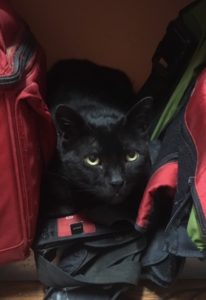
Mar 28, 2017 | Cushings, Drugs, Heat, Lameness, Laminitis, Leg issues, Medication, PPID, Retired, Vaccines, Weight loss/gain, Wellness Program
Blessed be the old farts. Around here there is a kind of reverence for the older horse. I will admit to jealousy. It’s not pretty, I know, but it’s real. I mean, I’m a cat. I deserve all the reverence around here. In an effort to explore the causes for this misguided worship I talked with my minions, I mean humans, about the phenomenon.
Turns out all my humans went with something along the lines of enjoying their horses, learning from them, and feeling appreciative of all the horses gave to them during their athletic careers. The humans said they wanted to make sure their horses had wonderful retirements since they had earned it. I was a little confused by the “earned it” thing, since I don’t need to earn anything, but I digress.
What messes up a horse’s retirement?
Do they golf? Do they play Canasta and Bridge? Apparently no. They wander around a field and eat. This is a typical day for me if you substitute ‘Clinic’ for ‘field’, so not sure if I’m retired already or how that works. Anyway, dental issues, lameness, and not feeling so hot are the biggies that interfere with retirees’ ability to wander around and eat.
The Teeth
Let’s start with dental issues. Horses are this really weird thing called an hypsodont. It means they have a whole lot of tooth when they are young, which they wear down to nothing over their lifetime. The super cool thing is you humans are doing such a good job taking care of your horses that they now outlive their teeth. Sure. that sounds scary, but with good nutrition it’s not a problem. What it does mean is that you may notice your horse not wanting to eat. You humans do a pretty darn good job knowing your horses. When Tiny backs off on feed, don’t worry that we are going to think you’re crazy. We won’t! We do the exact same thing! What we are going to do is schedule an appointment for one of our Docs to come take a look in Tiny’s mouth. They might find some teeth that need to be adjusted a little bit or potentially extracted.
The Legs
Moving on to lameness. This one I identify with. I have jumped down from high places one too many times and I’m starting to develop a bit of arthritis in my right front paw. Life catches up with us all. All those daring feats of athleticism we displayed in our younger years show up as aches and pain in our later years. Laminitis (same as founder) may rear its ugly head as well. Once again the signs can be subtle, and you, the awesome human, may notice Flicka is in a different corner of the pasture than normal. Once again, we won’t think you’re crazy when you tell us this. We do the exact same thing! In this case our Docs are going to evaluate feet, legs, and the musculoskeletal system in general to identify a cause for the lameness. If it’s arthritis, they will often recommend NSAIDs (horse aspirin) like bute or Equioxx, and movement, even in small amounts. If it’s laminitis, a test for Cushings is almost always called for. This is a test even a dog could pass! It’s just a blood draw. They also get on the phone with the farrier to make sure your horse’s entire team has the information they need.
When all of it goes wrong
Next there’s the “not feeling so hot”. Again, when you call to say Mister isn’t right, but you can’t put your finger on it, we will be nodding our heads. We know that feeling! This one is a little tougher. Our Docs will put on their detective hats and start the investigation with you. They won’t start with you because you are the prime suspect, they will start with you because you are the best source of information. You know your horse. You know if Mister ate and drank normally, and has he been sleeping normally? Rolling over? Is he in the same place in the herd hierarchy? Next they will take your information, combine it with a good physical exam, and determine a course of action. Usually, this involves some blood tests (remember they’re so easy a dog can pass them), along with an ultrasound of the chest and abdomen. Only thing difficult about an ultrasound is the cold alcohol they put on your skin. Based on these easy, peasy tests, our Docs will help you map out the best treatment options. Lots of times these tests turn up Cushings disease. Cushings is an endocrine disease which messes with every system there is to mess with. Good news though: one small pink pill daily is the treatment. And if you schedule an appointment by the end of the week, our monthly special is $10 off this blood test!
Horses are like fine wine, they only grow better with age. Totally patronizing the humans there, they told me to write that. Anyway, let your horse live long and prosper with a little TLC. The humans yak on a lot about Super Seniors, so this is the first in a four part Tuesdays with Tony expose. Tune in next week for part 2
-Tony


Feb 28, 2017 | Buying and Selling, Craigslist, Q & A, Re-homing, Retired, Trading, Weight loss/gain
Nobody ever sells their best horse. At least, not that I’ve seen during my 9 lives supervising an equine vet clinic. Typically, the docs are asked to help find homes for the 20+ year old retiree whose pasture-mate just had to be put down, the 13 year old lawn ornament that the kids grew out of, or the 3 year old un-broke colt who has barely been handled. Nobody is selling their 8 year old Grand Prix jumper….or at least they aren’t asking my advice about it!
Why are horses tough to sell?
The problem is, horses are working animals. Typically, it’s not good enough for them to just sit around and look adorable (like me). There is still a demand (and a price) for horses that are willing, able, and experienced doing a job. The docs frequently encounter clients looking for a quiet trail horse for their husband, a dead-broke pony for their 3 year old daughter, or a young, trained, athletic horse that they can put some finishing touches on and then re-sell for a profit.
Consider other solutions
In case you didn’t know, we at Springhill always know a long list of horses in search of homes. Would you consider finding a new pasture-mate for your old retiree? Perhaps you could lease the pony that your kids grew out of to another child in need of a mount? As for the un-broke 3 year old: 30 days of training might be a wise investment in terms of getting him off the market (and off your feed tab)!
How Springhill can help
Lucky for you humans, I happen to have created an excellent networking resource for our clients who are looking to buy, sell, lease, trade, donate, rescue, or otherwise exchange horses! It’s called Springhill Equine’s Client Corner, and it’s super easy to join! Simply log into your Facebook account, search “Springhill Equine’s Client Corner” and request to join the group. Once you are approved as a member, you will have access to a secret group made up of only Springhill’s finest. What better way to start re-homing your horse? You’re welcome!
-Tony

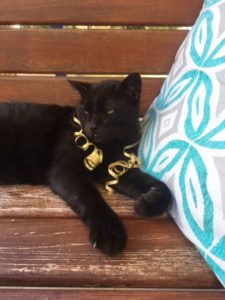
Dec 27, 2016 | Competition Horses, Events, Exercise, Hay, Weight loss/gain, Wellness Program

It’s that time of year when you humans like to work on some goals for the upcoming year. I listed mine out to show you how easy it can be: 1. Improve human response time to food demands, 2. Get better at using the computer so I can order my own cat treats, 3. Continue to find new and improved sleeping locations. Now see how easy that was? Look at what’s going on that you feel needs to change or improve and write down a goal to address it. OK, here we go.
Eat better. Beth looks at equine diets all the time and her mantra: simplify, simplify, simplify. Most of you humans like to make life sooo complicated. Go with quality hay, then add quality concentrate, then add supplements only if your horse needs them for a specific problem. This plan makes life easier and so much less expensive. Don’t believe me? Check your inbox later this week for Beth’s amazing breakdown on how much cheap feed costs!
Exercise more for the fat horses (like this cat). I struggle with this one, mostly because I hate to exercise. As a black cat living in Florida, it gets hot and I whine a lot and I end up spending the day laying around in the air conditioning. And that’s how I ended up with diabetes. The average horse needs to slow jog for about 15 minutes 3 times weekly to prevent founder and other serious fat horse problems. Commit to that time with your horse and you will stop so many problems in their tracks.
Exercise more for those show horses. Injuries happen at exhaustion. When your horse gets tired, muscles don’t respond like they should, legs end up going weird directions, and BAM! an injury occurs. Do your horse a favor and put in the time needed to have them truly fit for what you want to do. A good general guideline is to be able to do twice as much as you need to do in the show ring. Be sure you aren’t just drilling on “horse show moves.” Cross training is important! Riding horses on different types of terrain and footing helps them learn how to handle anything you crazy humans throw at them. Jumping your dressage horse, or trail riding your western pleasure horse helps keep the brain engaged and builds up different muscles than their normal, everyday work.
Learn something new. This is mostly for you humans. There is always a ton of research out there about the equine athlete. Oddly, there’s not much on the feline athlete. Look for a new exercise for you and/or your horse, read the latest science research on horses, get a lesson or sign up for a clinic. Step outside your comfort zone. You will be a better human for it.
One last New Year’s Resolution: Get your horse a Wellness Plan. With one simple call, e-mail, even text you can cross Better Health and Save Money off the list. You won’t have to remember when your Coggins is due, wonder if you have all the right vaccines, and you have freed up time and energy to eat better, exercise more, and learn something new.
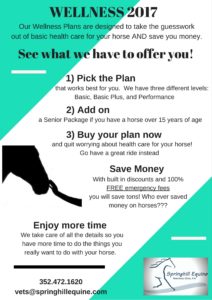



 Measure his length: Place the “zero” end of the tape at the point of his shoulder. Measure the length of his body straight back along his side to the crease between his muscles just below the point of his buttock.
Measure his length: Place the “zero” end of the tape at the point of his shoulder. Measure the length of his body straight back along his side to the crease between his muscles just below the point of his buttock. Whinny’s Wisdoms is the official blog of Whinny the Clinic Mouse at Springhill Equine Veterinary Clinic in Newberry, Florida. If you liked this blog, please subscribe below, and share it with your friends on social media! For more information, please call us at (352) 472-1620, visit our website at SpringhillEquine.com, or follow us on Facebook!
Whinny’s Wisdoms is the official blog of Whinny the Clinic Mouse at Springhill Equine Veterinary Clinic in Newberry, Florida. If you liked this blog, please subscribe below, and share it with your friends on social media! For more information, please call us at (352) 472-1620, visit our website at SpringhillEquine.com, or follow us on Facebook!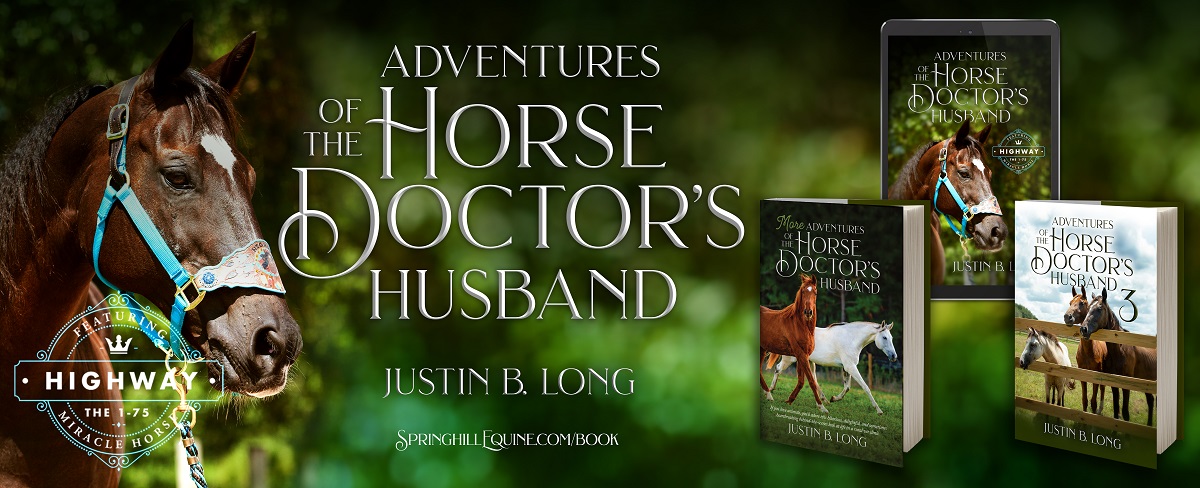

 We started off the evening by meeting these guys: Rascal and McGee. I have been around the Anheuser Busch Clydesdales before but I find their size awe-inspiring every time. I also find their tolerance for the crazy stuff they are asked to do pretty impressive. Rascal and McGee spent two hours standing in a hotel lobby (on a red carpet with padding underneath) being incredibly bored while 250-300 veterinarians and technicians oohh’d and aaahh’d over them, took selfies, marveled at their feathers, their extreme level of clean, and how they did their hair, and never once lost their cool. I can’t get Vespa to calmly stand on crossties in the barn at home reliably!
We started off the evening by meeting these guys: Rascal and McGee. I have been around the Anheuser Busch Clydesdales before but I find their size awe-inspiring every time. I also find their tolerance for the crazy stuff they are asked to do pretty impressive. Rascal and McGee spent two hours standing in a hotel lobby (on a red carpet with padding underneath) being incredibly bored while 250-300 veterinarians and technicians oohh’d and aaahh’d over them, took selfies, marveled at their feathers, their extreme level of clean, and how they did their hair, and never once lost their cool. I can’t get Vespa to calmly stand on crossties in the barn at home reliably! 








